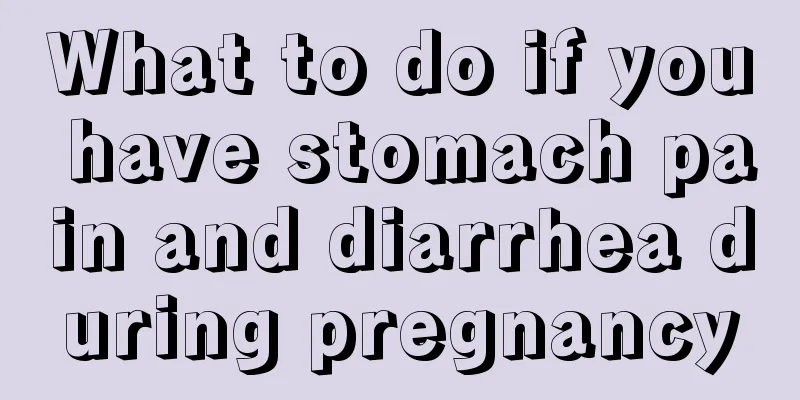What is the difference between curettage and abortion?

|
For women who choose medical abortion for unexpected pregnancy, some embryos usually remain in the uterus, causing continuous vaginal bleeding, which is very harmful to health. Generally, a curettage is required to remove the remaining embryos from the body in time. Otherwise, the longer the delay, the worse it is for health and it is easy to cause uterine cavity infection. What is the difference between curettage and abortion? What is the difference between a curettage and an abortion? 1. Definition Curettage and dilatation: Curettage and dilatation is a traditional artificial abortion, which refers to the operation of scraping the endometrium or the contents of the uterine cavity. It is a minor operation commonly performed in obstetrics and gynecology and is one of the methods of artificial abortion. Curettage: Curettage means that medical abortion is not completely complete, and mechanical methods are needed to clean out the remaining embryonic tissue in the uterus. 2. Adapt to the crowd Curettage: for pregnant women who choose artificial abortion or women who have foreign objects in the uterus and need to detect pathology. Curettage: Women whose medical abortion was not complete. 3. Classification Curettage: Curettage can be divided into diagnostic curettage and therapeutic curettage. Diagnostic curettage is divided into general diagnostic curettage and segmented diagnostic curettage. Therapeutic curettage can be divided into suction curettage and forceps curettage. Qing Palace: There is no classification in the Qing Palace. 4. Choose the right time Curettage: Suction curettage is the use of a negative pressure suction tube to suck out the contents of the uterine cavity, while forceps curettage is the use of an oval forceps to remove the contents of the uterine cavity, followed by curettage. The indications for therapeutic curettage include: those who want to terminate the pregnancy in early pregnancy, suction curettage within 3 months of pregnancy, forceps curettage to remove residual materials in the uterine cavity after 3 months and after induced abortion; those who need to empty the uterine cavity for incomplete abortion, inevitable abortion, missed abortion, retained placenta, hydatidiform mole, etc. Contraindications include acute genital tract and pelvic inflammation, trichomoniasis and candidal vaginitis, and patients with severe medical diseases who cannot tolerate surgery. Uterine curettage: Once incomplete abortion, delayed abortion, or hydatidiform mole is diagnosed, if there are no special contraindications (including visceral diseases such as heart and lung, blood diseases, infections, etc.), uterine curettage can be performed; if artificial termination of pregnancy is required, it should be performed within 12 weeks of pregnancy. Generally speaking, curettage and uterine curettage are not recommended, mainly because the failure rate of medical abortion is high and the chance of needing uterine curettage is very high, which is extremely harmful to the female body. Curettage will cause women great pain and have a psychological impact. If the curettage or uterine curettage is not handled properly, it may cause inflammation, and in severe cases, it may cause symptoms of infertility. Therefore, women must learn to take care of themselves and take protective measures. What should you pay attention to after curettage? 1. After the curettage, women need to rest in bed. It will take at least two days before they can get out of bed. Do not do physical labor within fifteen days after the operation and stay away from cold water. The entire recovery period for surgery is one month. During the recovery period, you should strengthen your nutrition, especially protein intake, which can effectively enhance the patient's resistance after surgery and shorten the organ recovery time. 2. One month after the curettage, since the uterus is not completely closed, you must keep the vulva clean and avoid sitting baths, otherwise sewage may enter the vagina and cause infection. Also, you should not have sexual intercourse during the recovery period after surgery. 3. After a curettage, it will take a relatively long time for a woman's ovaries to recover, but it will not affect ovulation. At this time, you should pay attention to contraception. |
<<: Why is there sudden bleeding ten days after curettage?
>>: Sexual enhancement methods for women
Recommend
What does it mean when the leucorrhea is thin, yellow and has an odor?
Leucorrhea can usually be used as a basis for dia...
Blood streaks around the nipple
The nipple is the female's breastfeeding orga...
Can I have an implant during the month of hysteroscopy?
Generally, hysteroscopic surgery is used to treat...
Can patients with colds undergo surgery? Many people do not understand this.
Patient: "Ahem, ahem, doctor, I have a cold....
What to do if your finger joints hurt during pregnancy
There are many things to pay attention to during ...
What are the symptoms of 61 days of pregnancy?
The 61st day of pregnancy is exactly two months i...
What is the best way to treat uterine cold?
Gynecological diseases are a common disease in ou...
A hard lump under the vulva
Key reminder: In daily life, we often see girls w...
How long after a normal birth can I take a shower and wash my hair
Modern people love cleanliness very much. After a...
What color lipstick doesn't make you look darker? What color lipstick is suitable for bare face?
Everyone loves beauty, and I believe that you who...
What is the nutritional value of peanuts? How to eat peanuts in the most nutritious way
Although peanuts are small, they play a big role ...
7 kinds of snacks that look "healthy" are actually stumbling blocks on the road to weight loss!
Many people ask, why do they keep gaining weight ...
What is the cause of pelvic effusion in women?
The pelvis is a very important part of women. The...
Three natural births after two caesarean sections
Whether natural birth or caesarean section is bet...
What does it look like when hairy crabs are not fresh? How to tell if hairy crabs are fresh?
We all know that hairy crabs are a popular food, ...









